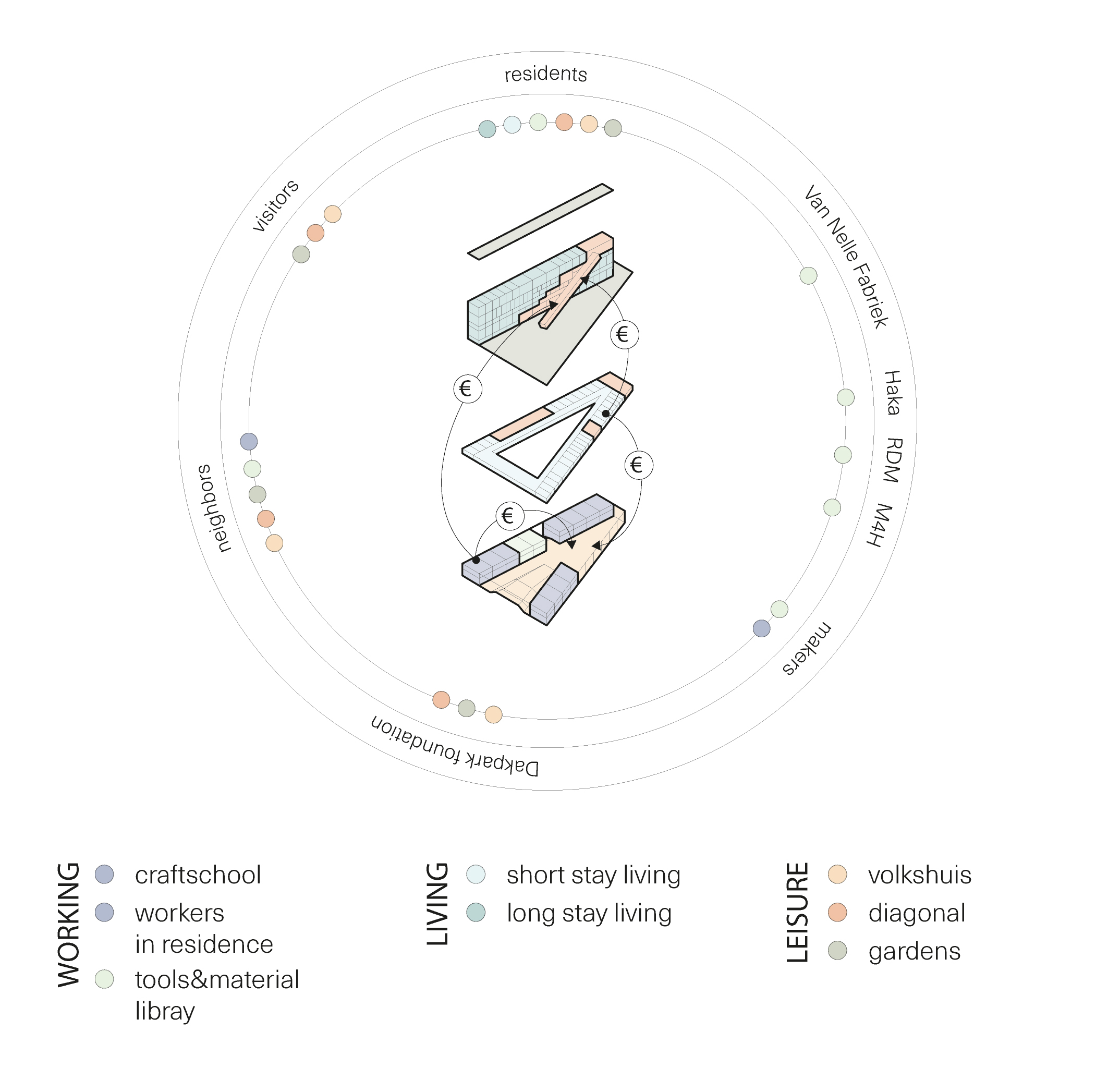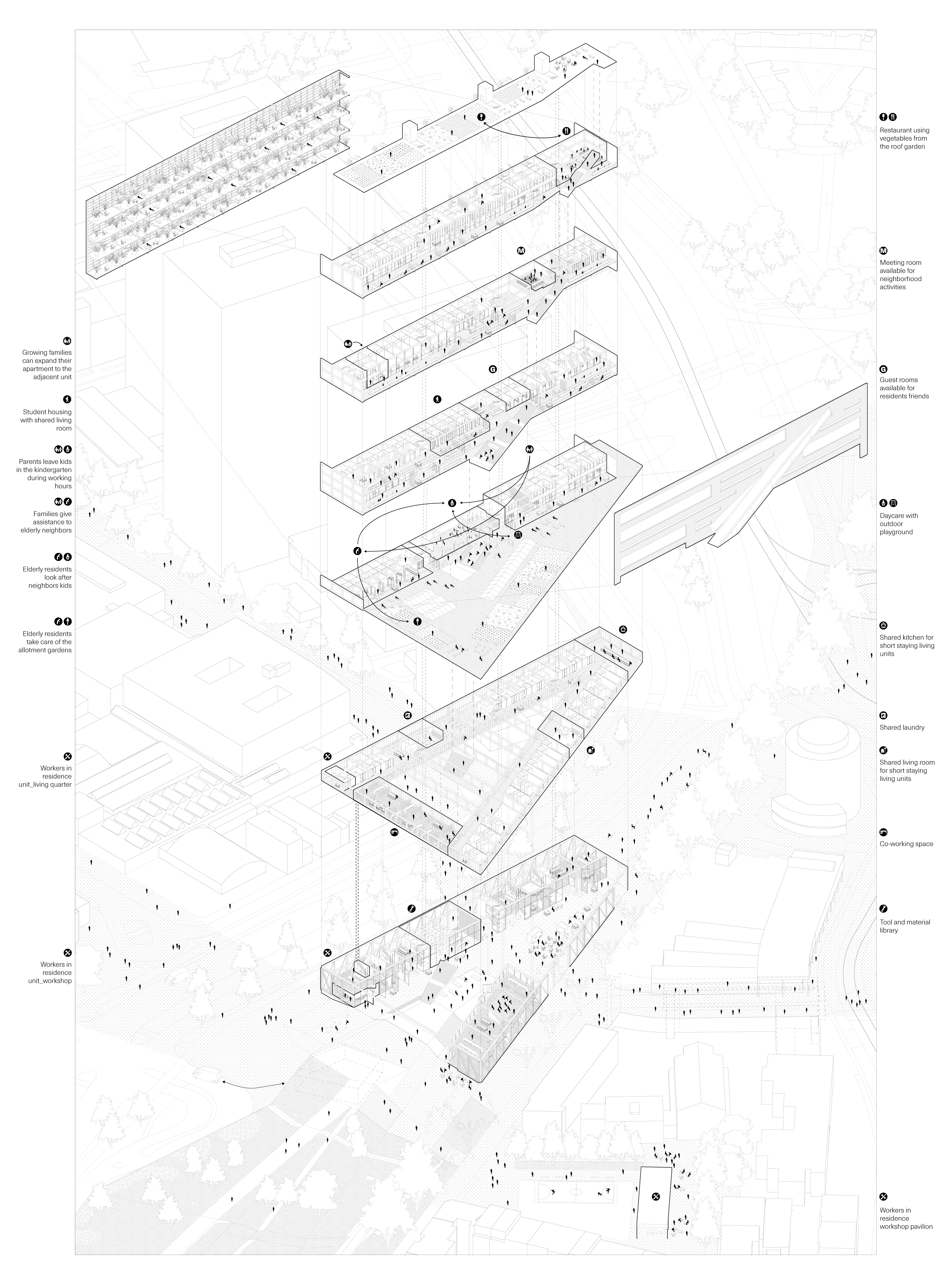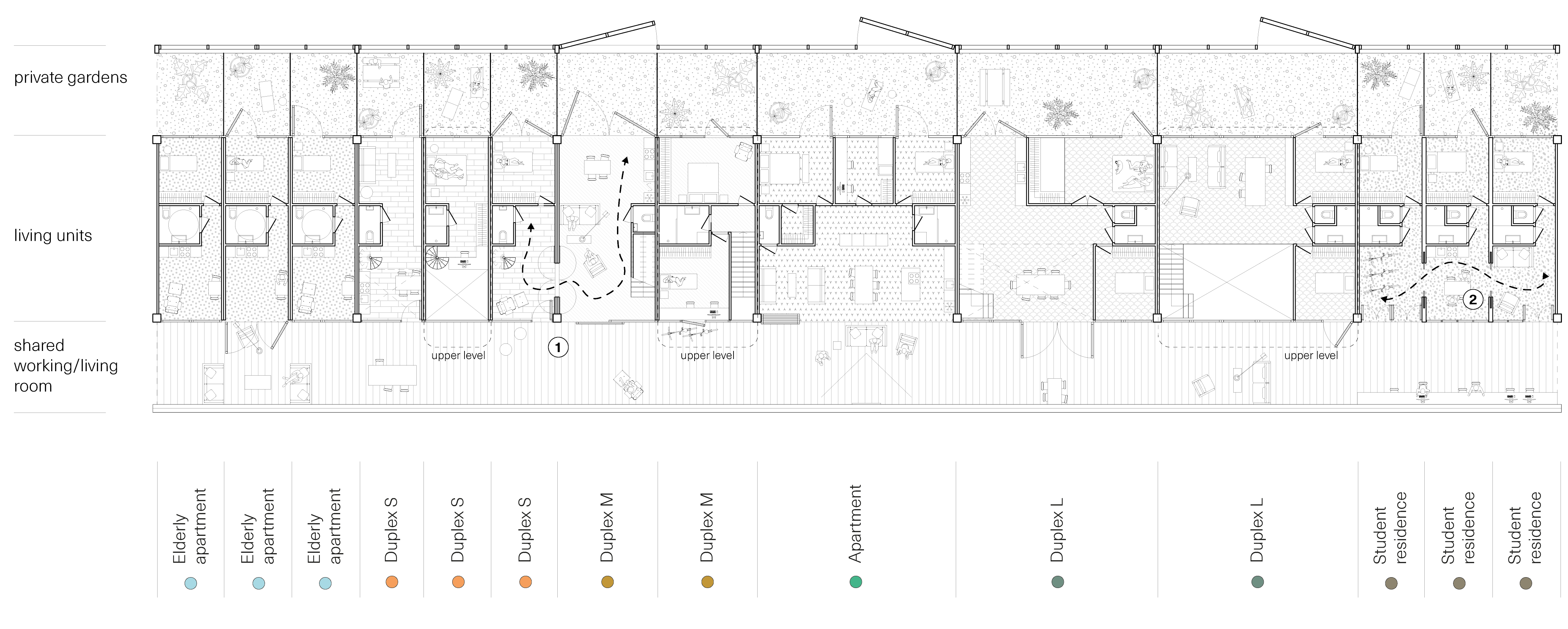VOLKSPARKHUIS
Architecture
Rotterdam 2019
In collaboration with LMNL and ISA.
![]()
Towards a new Volkshuis
The original Volkshuis was the first concep of a community center, intended as a mean for the cultural education and training of the citizens. The 21st century
Volkshuis we propose for this site aims to overcome his problem: leisure activities do not remain separated from production, but, on the contrary, the allocation of production workshops funds the cultural program, allowing the creation of an economically sustainable structure.
At the same time, the Volkshuis remains a pedagogical tool: the leisure program supports production function on the neighborhood scale, shows the hidden production that already happens in the area, and promotes new collaborations.
![]()
The existing Dakpark and the new Volkhuis come together in an integrated hybrid urban infrastructure. The Dakpark goes higher, expanding onto the two rooftops of the new city block, becoming a panoramic viewpoint of the city and the harbour. An iconic diagonal public staircase connects all the levels of the building, creating a direct access to the public functions and the new green roofs. Meanwhile, a combined cultural program brings together the activities that already happen on Dakpark, with the new event space of the Volkshuis, making Marconiplein one of the cultural cores of the city: a gathering place not only for the neighborhood, but also the whole of Rotterdam.
![]()
The spatial configuration of the living units inside the building promotes interactions and synergies between different residents, who can help each other in a productive way. Different typologies of living units have different levels of interaction between each other. Student houses, for example, also have a shared living rooms inside each unit, while elderly apartments share the space in front of them (so that chance encounters with others are more frequent).
Volkparkhuis allows to aggregate units of different types: a couple that has a new child can expand its living area into the next unit instead of moving to a bigger apartment. And on the other hand, parents with children who have moved out can decide to downsize their apartment by reversing the additions. This allows a more sustainable and long-term community to form, where people can remain for longer periods of time, and connections can develop.
![]()






